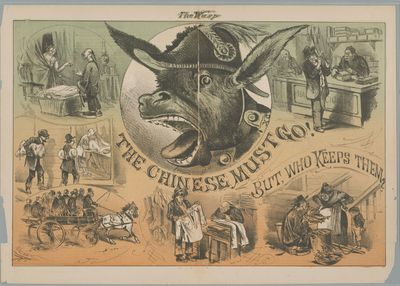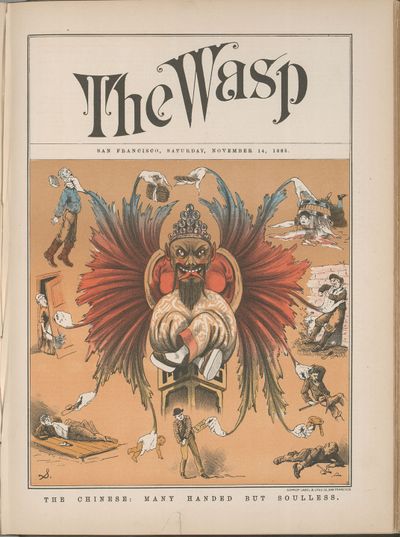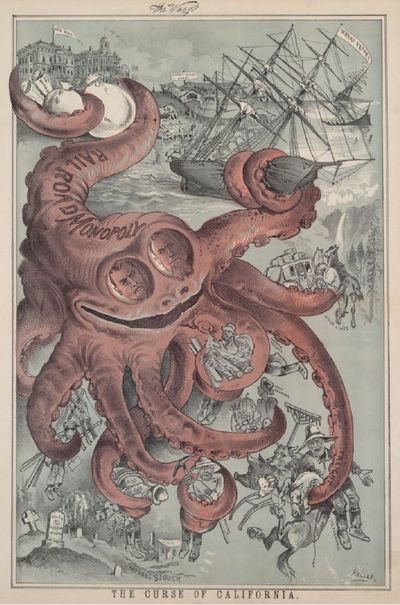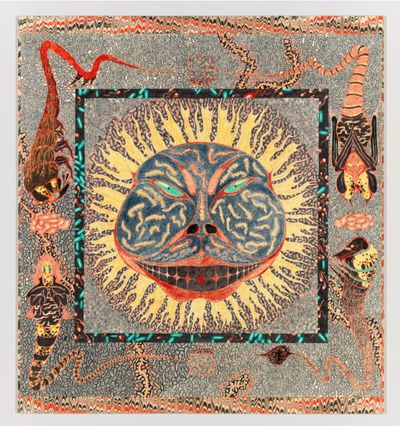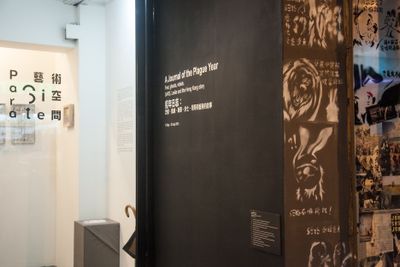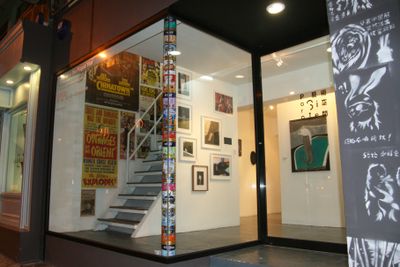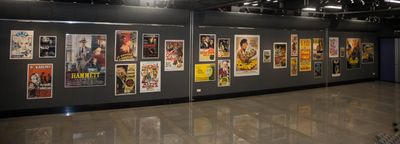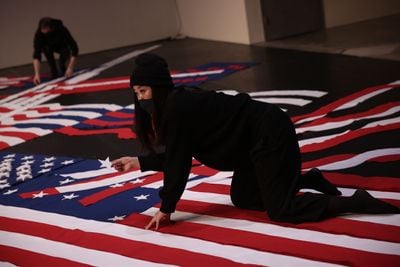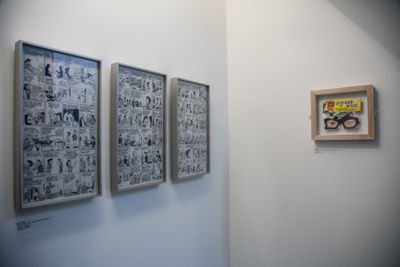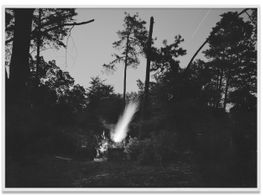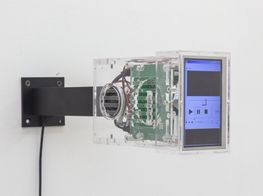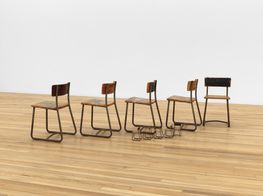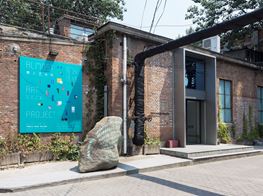Art Workers Demand Coverage of Stop Asian Hate
Moko Fukuyama, American Recordings, Act I: American Harvest (16 February 2021). Performance view at Queenslab. Photo: © 2021 Paula Court.

Moko Fukuyama, American Recordings, Act I: American Harvest (16 February 2021). Performance view at Queenslab. Photo: © 2021 Paula Court.
Last month, eight Asian artists and art professionals drafted an open letter addressed to Artforum. Published on 1 April, the letter called on the publication to end its 'silence' on the Stop Asian Hate movement and provide a direct response to the rise in anti-Asian abuse and violence.
The letter, which included an analysis by Ivan Chang of Artforum's coverage, has since been signed by over 600 artists and art professionals, and translated into Chinese, Vietnamese, Indonesian, and Japanese, with translations in Korean and Thai in development.
'[We] have been calling on the art media, as we carry on our long-term anti-racism work, to amplify Asian voices and demands through nuanced and engaging writing,' they wrote. 'These crucial forms of media coverage have been so far glaringly missing. We are, once again, invisible.'
Artforum did not respond to a request for comment.
The initiators of the letter are artists He Xiangyu and Xu Wenkai (aka aaajiao), curator and art historian Wang Xin, art writer Gu Qianfan, curator and writer Weng Xiaoyu, curators Li Zhenhua and Danielle Shang, and Tabula Rasa Gallery founder Sammi Liu. They spoke to Ocula Magazine's Sam Gaskin about the rise of anti-Asian sentiment, the Asian art community's efforts to address racism, and what art media can do better.
Weng Xiaoyu, The Robert H. N. Ho Family Foundation Associate Curator at the Guggenheim, emphasised that the letter was not to single out a particular art publication, but rather the 'beginning of us thinking and trying to sketch out something concrete, in our field, to respond to the recent surge of bigotry and hate crimes against Asian communities.' She also said that the views communicated below are strictly their own, and are not affiliated with their work, institutions, and organisations.
SGA report from the Centre for the Study of Hate and Extremism at California State University, San Bernardino, found that from 2019 to 2020, the total hate crimes reported to police in 16 major U.S. cities declined by 7 percent, but hate crimes against Asians increased 149 percent, from 49 to 122. In New York City, hate crimes against Asians increased 833 percent, from 3 to 28. These stats do not include the Atlanta shooting, where six Asian women were killed in March 2021.
What do you think caused this increase in violence against Asians in U.S. cities, and in particular, N.Y.C.? And how much violence against Asians have you seen or heard reported outside the U.S.?
GQThe shocking stats reflect what we've been feeling, especially since the pandemic outbreak, when the Trump administration strategically used the label of 'Chinese virus' to shift blame for the spread of Covid-19, and sadly made it acceptable for people to express anti-Asian xenophobia in turn.
It is a critical reminder that this hatred is not new, but extends the history of racist violence in the U.S., from the Chinese Exclusion Act of 1882 to the Japanese internment camps during the 1940s. Asians have played the role of scapegoat more than a handful of times.
Several recent attacks, including the brutal Atlanta shooting and some severe assaults that happened in N.Y.C., were disgracefully targeted at women and the elderly. The mix of misogyny, ageism, and classism is glaringly outrageous. It requires each and every one of us to confront it and speak up.
HXI have not been living in the U.S. in recent years, so my answer is a response from the perspective of living and working in Europe—I am currently based in Berlin. It is not difficult to see that the U.S. has become increasingly racist and reactionary. Hate crimes by definition are criminal acts committed with racial, religious, or gender prejudice.
These are acts motivated by anger and ignorance. When Covid started spreading in the U.S., the former president was clear in laying blame on the Chinese. The language he used and arguments he made were deeply hostile and unacceptably aggressive. However, more important than his hate speech and acts, is that although he was the one motivating it from the top, in the long run, a single individual cannot manipulate hatred.
The social and national systems are complicit in this, and have perpetuated and deteriorated the situation. Hate crimes and violence against a specific community are systemic, and are related to the whole of the institution.
Part of it is of course the ignorance and negligence practiced by many. We must urgently act to resist the system that hates and practices violence, but not without careful and in-depth understanding of the structural and historical reasons.
I frequently hear and see hate crimes and violence against Asians. Me, my family, friends, and colleagues have had similar experiences of being attacked with either verbal abuse or life-endangering violence.
Asian friends and colleagues based in other countries suffer too. But I still want to reiterate that the 'rise' of hate crimes could just be the public recognising what has always been taking place, labelled as a different crime at times, and often unreported and ignored.
We must urgently act to resist the system that hates and practices violence, but not without careful and in-depth understanding of the structural and historical reasons.
SGWhat do you see as the most inspiring and influential responses from the Asian art community to the rise in hatred towards Asians?
Wang & SLThis answer must be first contextualised through the reality that many museums, art institutions, and platforms through which artists can typically be vocal and organise in response to social unrest and injustice have been severely limited during Covid. The following responses only focus on the exhibitions and activities that take place in the United States.
With that said, Kenneth Tam's recent exhibition Silent Spikes at the Queens Museum (24 February–23 June 2021), New York, provides perhaps the most direct exploration of the historical registers—the Chinese transcontinental railroad workers, the Chinese Exclusion Act, and the stereotyped, maligned Asian masculinity—that continue to haunt us today.
But equally, if not more compelling are exhibitions that cast the Asian American or diasporic lens towards America's tormented racial relationships and history—the broader systems that produced myriad forms of injustice, including those facing Asian Americans.
These include An-My Lê: On Contested Terrain (14 March 2020–18 January 2021), a comprehensive survey of the Vietnamese American artist that premiered at the Carnegie Museum of Art, Pittsburgh, last year and is now travelling to the Amon Carter Museum of American Art in Fort Worth, Texas (18 April–8 August 2021).
The artist's surgical yet poetic reflections on sites, landscapes, and icons of American imperialism and militarism—from the perspective of both a Vietnam War refugee and a cosmopolitan artist—provide the necessary scrutiny of 'America' from 'Asian' perspectives.
Carried out in a similar vein is Moko Fukuyama's project American Recordings, recently released through The Kitchen's OnScreen programme, which saw the Japanese-born, America-based artist navigating the compound crises of public health, systemic racism, and environmental degradation in a quasi-documentary work.
We must urgently act to resist the system that hates and practices violence, but not without careful and in-depth understanding of the structural and historical reasons.
Co-initiator Wang Xin's lectures series for the Whitney Museum of American Art, New York, entitled 'Art History from Home: Asian American Perspectives' (30 June 2020), followed the same line of inquiry. These widely attended lectures were developed and carried out during the latest surge of anti-Asian sentiments and hate crimes, but aim to transcend the current moment and typical identity politics.
Examples of collective response can be found in, for example, Best! Letters from Asian Americans in the arts (2021), edited by Christopher K. Ho and Daisy Nam. While initially planned to address the complex implications of the model minority myth within the Asian American arts community, the recently published anthology captures the unprecedented political and cultural circumstances impacting Asian American artists active today.
Other cases include fundraisers including the exhibition organised by L.A.-based gallery Make Room, We Stand Together to Stop AAPI Hate (26 March–23 April 2021), which resulted in rapid mobilisation and an enthusiastic response from the commercial sector of the art world.
WengAt the very beginning of this anti-Asian wave, I wrote an essay in three parts to raise awareness and invited a few artists to respond. In the essay, I also highlighted the 2013 exhibition, A Journal of the Plague Year.Fear, Ghosts, Rebels. SARS, Leslie and the Hong Kong history, organised by Para Site in Hong Kong (17 May–20 July 2013).
The exhibition is indeed eight years old, but the anti-Asian xenophobia and racism addressed by the show is shockingly similar to our present moment. The current pandemic is exposing racism in much the same way, necessitating a close examination of the pattern of xenophobic reactions to Asian communities in the United States.
The essay I wrote for the Para Site exhibition, entitled 'Angel Island' (download here), gave me an opportunity to dive deep into the history of discrimination against Asian communities in the United States. My resulting research focused on the now-defunct detention centre on San Francisco's Angel Island and the stereotypical iconography used to depict Chinese immigrants in California's print media at the turn of the 19th century.
SGYou have written an open letter to Artforum asking for them to cover the #StopAsianHate movement. Why is it important that Artforum in particular cover this issue, and what do you think has kept them from covering it up until now?
LZ & DSFirst of all, we want to be clear that we are not singling out Artforum. We recognise Artforum as one of the art publications who have continuously marginalised Asian and Asian diasporic art communities, except for occasional tokenism. At the height of brutalisation against Asians in the West, hardly any art publications have expressed support to our communities.
The open letter is a reminder to all that invisibility and underrepresentation contribute to our current dire situation, and white supremacy is at the root of all social ills, especially in the U.S.
To stay relevant in the 21st century, publications, such as Artforum must embrace diversity, stand in solidarity with communities of colour, demand social justice, and promote cultural equality. Artforum should ask themselves what has kept them going along with discrimination against Asian and Asian diasporic communities, and what has prevented them from thinking forward and participating in activism and social movements.
Real attention comes from care and in-depth conversations with a diverse group of people that share different experiences and perspectives.
WengI also want to add here that there is this profound sense of indifference and laziness. Because of the longstanding and systemic power imbalance, the responsibility of explaining, educating, organising, and interpreting always falls onto the minority and marginalised groups as the privileged never feel the urgency to do so, because racism, racially motivated prejudice, trauma, and invisibility are not part of their everyday experience.
I also find the concept and ideology of 'inclusion' very problematic, because it perpetuates the power dynamic. We don't need to be included; we are always part of the whole! The U.S. art world has become increasingly—or has always been—nationalistic and navel-gazing. But these racially motivated crimes can't be clinically separated by a nation-state cut-off line.
The key here is to talk, show, write, translate, and organise more content that is not 'comfortable' or 'familiar'. Critically, the key issue here is what, how, and who the representation is? Who has the rights to represent?
It is not news that writers and curators from the privileged group have always been the gatekeepers for how representations and narratives are constructed while black, indigenous, and people of colour (BIPOC) writers and curators are kept in pigeonholes and only allowed to be heard and seen in certain predefined ways, in order for the former to maintain and deepen the aforementioned power dynamic.
We now refuse and reject such ways of doing things. How can we unlearn this stereotypical tradition? How can we truly reconstruct this power structure? Therefore, we call on major publications to be role models.
GQI'd like to add and highlight the fact that Artforum has its own Chinese language version. And it surprised me that the editorialheadquarters in New York still keep silent without publicly showing anycondolences to their Asian colleagues.
SGWhat are the most meaningful ways that art media can cover social justice issues like this?
XWConcede power to establish a dialogue mechanism. Dialogue is not, 'You ask questions and I answer.' Dialogue is, 'I ask questions, invite everyone, and be heard.'
WengI want to clarify that we are not asking the art media to do social justice work and to be activists. We also do not identify ourselves as activists. We are art and culture workers. To pay attention, to reach out, and to learn are the first steps.
How can art media overcome the above-mentioned indifference and laziness? The answer is to do the job, to actively collaborate with people, to let go of their gatekeeping power, and in the meantime, to actively reality check on who is gatekeeping and if they are maintaining such practice. For example, are the art media always interviewing the same handful of white curators and dealers, inviting the same group of writers of similar backgrounds to contribute?
Don't name-drop Asian artists who occupy the centre of media attention already because that is laziness as well. Speaking of the politics of attention, we don't need any further attention that continues to stereotype certain kinds of representation. Real attention comes from care and in-depth conversations with a diverse group of people that share different experiences and perspectives.
We would like the art media to ask themselves: Can editors really listen to what writers and artists have to say? Because what they are saying might not be what the editors always know and experience. Can editors be more patient and work with writers if art world English is not their first language or 'art world English thinking and ideology' is not their first belief? Can they hire BIPOC people to be the chief editors and fill in important positions within the organisation?
Last but not least, I want to see more and more opportunities and platforms created for intersectionality and shared experience among BIPOC communities. I want to see more exchanges, writing, and organising taking place that break the constructed racial segregation. For example, stop falling into the trap of pitting one BIPOC group against another, and perpetuating the absurd belief that resources are limited for BIPOC communities.
I want to see Asian artists and artworks being written about, interpreted, and curated by non-Asian groups among BIPOC communities; and Black artists and artworks being written, interpreted, and curated by non-Black groups, and the same applies to other BIPOC and marginalised groups.—[O]


